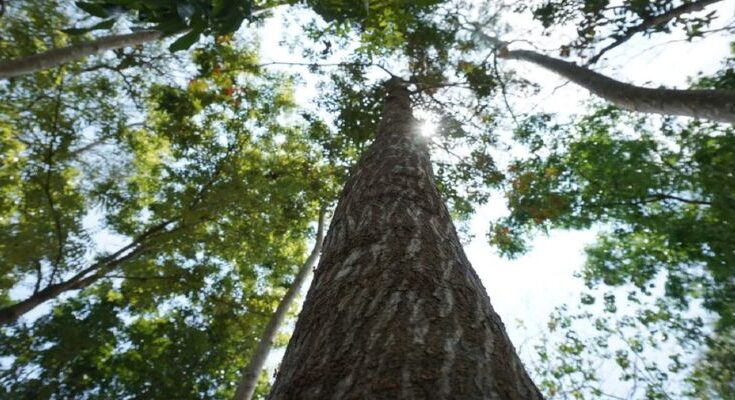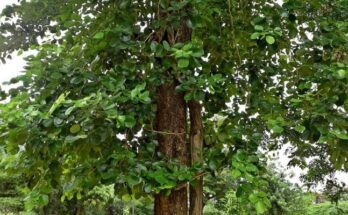|
Getting your Trinity Audio player ready...
|
The Indian Mahogany Tree, scientifically known as Swietenia mahagoni, is a majestic evergreen tree native to India. Renowned for its dense, dark, and durable wood, it is highly valued in the furniture and construction industries. Growing up to 30 meters tall, this tree thrives in tropical climates and is often found in forests and plantations. Its lush, green foliage provides ample shade, and its fragrant, small white flowers add to its charm. Besides its commercial importance, the Indian Mahogany Tree plays a vital role in maintaining ecological balance, offering habitat to various wildlife and contributing to soil conservation.
Scientific Classification of the Indian Mahogany Tree (Swietenia mahagoni)
| Kingdom | Plantae |
|---|---|
| Phylum | Tracheophyta |
| Class | Magnoliopsida |
| Order | Sapindales |
| Family | Meliaceae |
| Genus | Swietenia |
| Species | Swietenia mahagoni |
Characteristics of Indian Mahogany
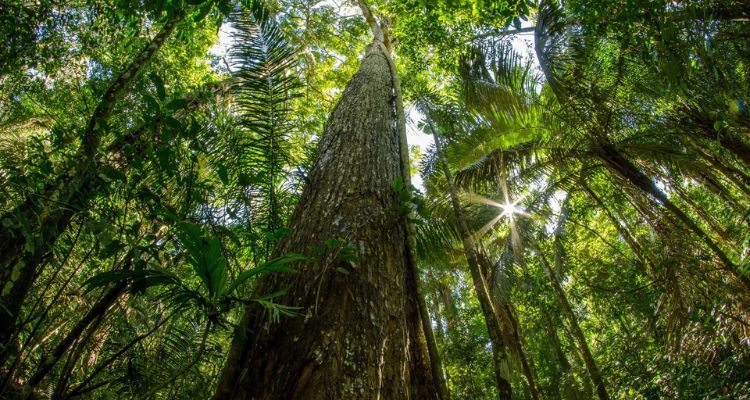
Botanical Profile
The Indian Mahogany Tree, scientifically referred to as Swietenia mahagoni, is a prominent evergreen species native to the Indian subcontinent. Known for its striking appearance and robust wood, this tree is a staple in both natural forests and cultivated plantations.
Appearance
- Height: Typically reaches up to 30 meters.
- Trunk: Straight and cylindrical, with a diameter that can expand significantly as the tree matures.
- Bark: Reddish-brown and rough, often flaking off in scales.
Leaves
- Type: Pinnate with an odd number of leaflets.
- Color: Glossy dark green on the upper side, lighter underneath.
- Arrangement: Alternately arranged along the stem.
Flowers
- Color: Small and white.
- Fragrance: Mildly fragrant, adding to the tree’s allure.
- Blooming Season: Typically during the spring, although this can vary based on the climate.
Fruit
- Type: Woody capsule.
- Size: About 10-15 cm long.
- Seeds: Numerous, winged for effective wind dispersal.
Wood
- Color: Ranges from reddish-brown to deep mahogany.
- Texture: Fine and even, with a natural lustrous sheen.
- Durability: Highly durable and resistant to decay and termites, making it ideal for furniture and construction.
Ecological Importance
- Habitat: The Indian Mahogany Tree offers refuge and sustenance to a variety of wildlife species.
- Soil Conservation: Helps in preventing soil erosion with its extensive root system.
- Air Quality: Contributes to air purification by absorbing pollutants and releasing oxygen.
The Indian Mahogany Tree stands as a symbol of strength and elegance, offering both ecological benefits and economic value through its remarkable characteristics.
Indian Mahogany Wood
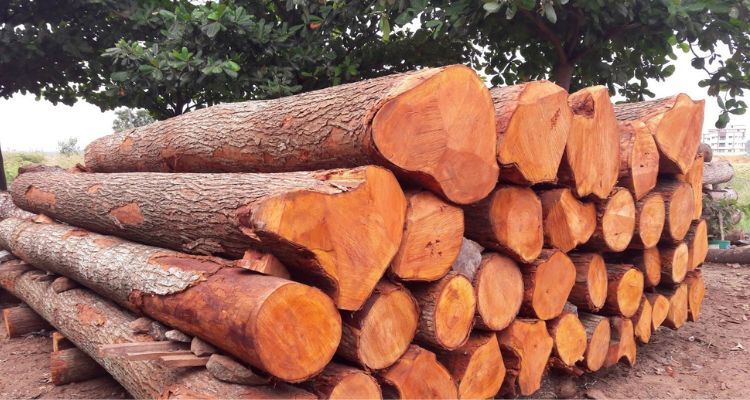
Indian Mahogany Wood, renowned for its rich, reddish-brown hue and fine, even texture, is a symbol of elegance and durability. Its straight grain and natural sheen make it a favorite for high-quality furniture and cabinetry. This hardwood is not only aesthetically pleasing but also highly resistant to decay and termites, ensuring long-lasting performance. Ideal for both indoor and outdoor use, Indian Mahogany is easy to work with, taking well to sanding, polishing, and finishing. Whether crafting luxury furniture, flooring, or musical instruments, Indian Mahogany Wood offers unmatched beauty and reliability, making it a top choice for artisans and builders alike.
Indian Mahogany Tree Uses
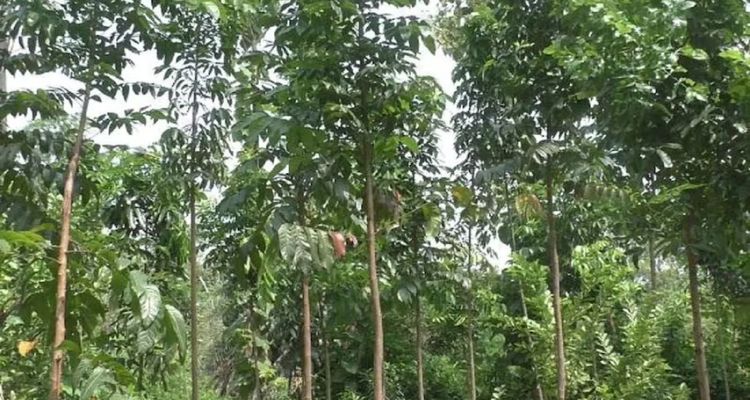
- Furniture Making: The wood’s rich, reddish-brown hue and fine grain make it perfect for crafting high-quality furniture pieces, such as tables, chairs, and cabinets.
- Cabinetry and Woodwork: Favored for its durability and aesthetic appeal, Indian Mahogany is a top choice for elegant cabinetry and intricate woodwork.
- Flooring: Its hardness and beautiful finish make it ideal for luxurious hardwood flooring that can withstand heavy foot traffic.
- Musical Instruments: Prized for its resonant properties, the wood is used in making premium musical instruments, including guitars and pianos.
- Boat Building: The wood’s resistance to water and decay makes it suitable for constructing boats and other marine applications.
- Construction: Utilized in building outdoor structures like decks and pergolas, thanks to its durability and termite resistance.
- Medicinal Uses: The bark and leaves are used in traditional remedies for their medicinal properties.
- Ecological Benefits: The tree contributes to soil conservation, provides habitat for wildlife, and aids in carbon sequestration.
- Decorative Veneers: Used in high-end interiors for wall panels and veneers due to its attractive appearance.
Indian Mahogany Tree Leaf
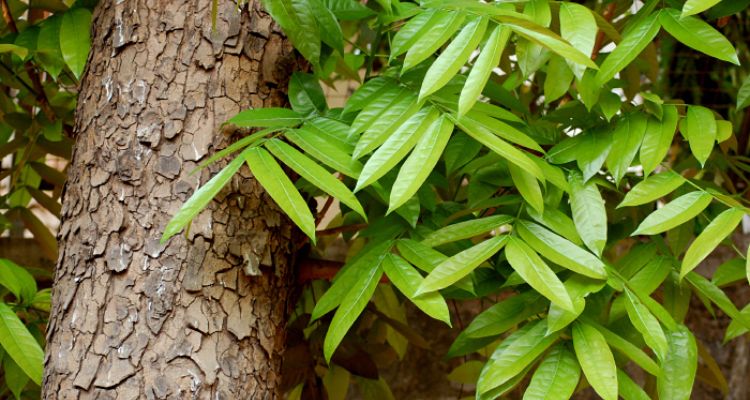
The leaves of the Indian Mahogany Tree are characterized by their glossy, dark green appearance and pinnate structure. They grow alternately along the branches, forming an elegant canopy that provides ample shade in tropical climates. Each leaf is composed of multiple leaflets arranged in an odd-numbered pattern, adding to the tree’s ornamental value. While the leaves themselves are not typically harvested for commercial use, they play a crucial role in the tree’s photosynthesis process, contributing to its overall health and vigor. In addition to their functional role, the leaves of the Indian Mahogany Tree enhance its aesthetic appeal, making it a cherished species in landscapes and gardens.
Indian Mahogany vs. Other Mahogany Species
When comparing Indian Mahogany (Swietenia mahagoni) with other mahogany species, several distinctive characteristics set it apart:
Indian Mahogany (Swietenia mahagoni)
Indian Mahogany, native to the Indian subcontinent, is renowned for its dense and durable wood, which ranges from reddish-brown to deep mahogany in color. It features a fine, straight grain and a natural lustrous sheen, making it highly sought after for furniture, cabinetry, and musical instruments. Known for its resilience against decay and termites, it thrives in tropical climates, contributing to soil conservation and providing habitat for wildlife.
Other Mahogany Species
- American Mahogany (Swietenia macrophylla): Also known as Big-leaf Mahogany, it hails from the Americas and is prized for its wide boards, easy workability, and deep reddish-brown color. It’s a popular choice for high-end furniture and musical instruments.
- African Mahogany (Khaya spp.): Native to tropical Africa, African Mahogany is valued for its rich reddish-brown color, stability, and affordability compared to other mahogany species. It’s commonly used in furniture making, cabinetry, and flooring.
- Philippine Mahogany (Shorea spp.): Although not a true mahogany, Philippine Mahogany (also known as Lauan) offers a similar appearance and workability. It’s widely used in plywood and veneer due to its affordability and availability.
Each mahogany species has its unique qualities, but Indian Mahogany stands out for its exceptional durability, aesthetic appeal, and ecological benefits in its native habitat. Its distinct properties make it a preferred choice for artisans and builders looking for quality and sustainability in their projects.
Conservation and Sustainability of Indian Mahogany Tree
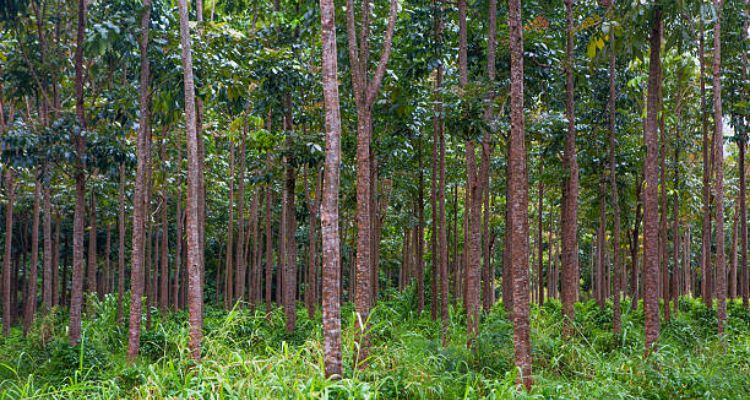
Conservation and sustainability efforts surrounding the Indian Mahogany Tree (Swietenia mahagoni) are crucial due to its economic importance and ecological value. Here’s why:
- Economic Importance: Indian Mahogany is prized for its high-quality timber, used extensively in furniture, cabinetry, and musical instruments. Its durability, aesthetic appeal, and natural resistance to pests make it a preferred choice in these industries, contributing significantly to local economies.
- Ecological Value: Beyond its commercial use, the Indian Mahogany Tree plays a vital role in maintaining biodiversity and ecosystem health. It provides habitat and food for various wildlife species, supports soil conservation with its extensive root system, and helps mitigate climate change by sequestering carbon dioxide from the atmosphere.
- Conservation Challenges: Indian Mahogany faces threats from habitat loss due to deforestation, illegal logging, and unsustainable harvesting practices. Climate change and invasive species also pose additional challenges to its survival in the wild.
- Sustainable Practices: To ensure the long-term viability of Indian Mahogany, sustainable forestry practices are essential. This includes:
- Regulated Harvesting: Implementing quotas and guidelines for harvesting to prevent overexploitation.
- Reforestation: Planting new mahogany trees to replace harvested ones and restore degraded habitats.
- Community Engagement: Involving local communities in conservation efforts to promote responsible management and ensure economic benefits.
By balancing conservation efforts with economic needs, stakeholders can secure the future of Indian Mahogany while preserving its ecological integrity for generations to come.
Wrapping Up
The Indian Mahogany Tree (Swietenia mahagoni) stands as a testament to nature’s elegance and resilience. From its dense, durable wood prized in furniture and construction to its lush foliage providing shade and its ecological role in habitat preservation and soil conservation, this majestic tree offers a blend of practicality and beauty. However, its sustainability hinges on responsible management practices amidst challenges like deforestation and climate change. By fostering sustainable forestry practices, promoting biodiversity, and engaging local communities, we can safeguard Indian Mahogany’s future while enjoying its enduring contributions to craftsmanship and environmental health. Embracing these principles ensures that future generations can continue to appreciate and benefit from the Indian Mahogany Tree’s remarkable attributes.
Don’t Miss: Fig Plant | Care, Flower, Benefits, How to Grow, Uses, and More
